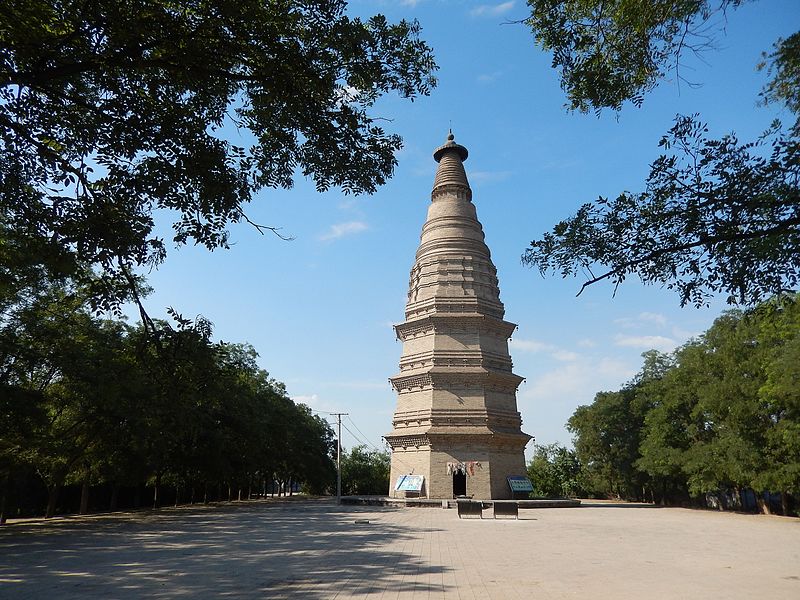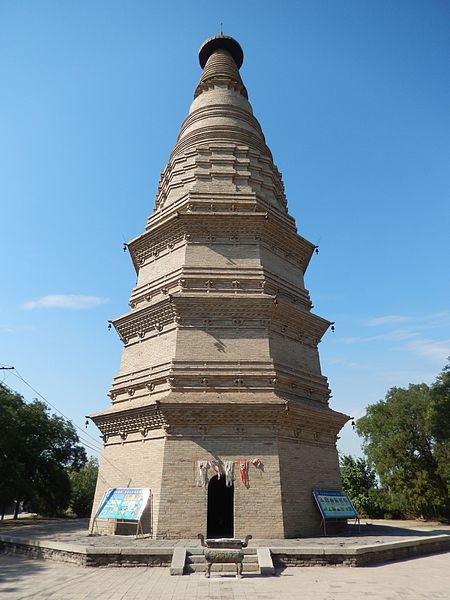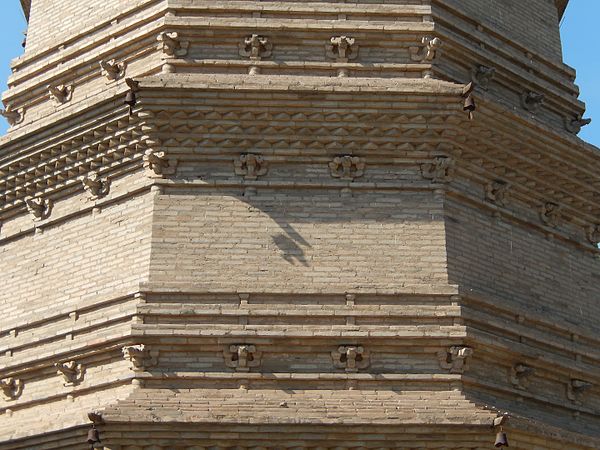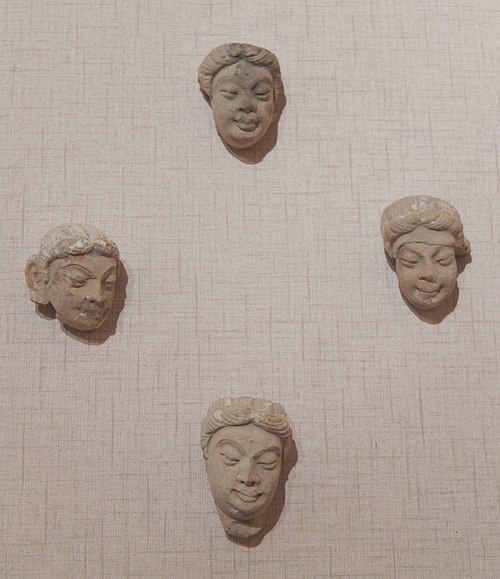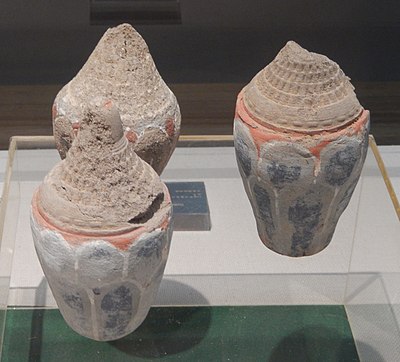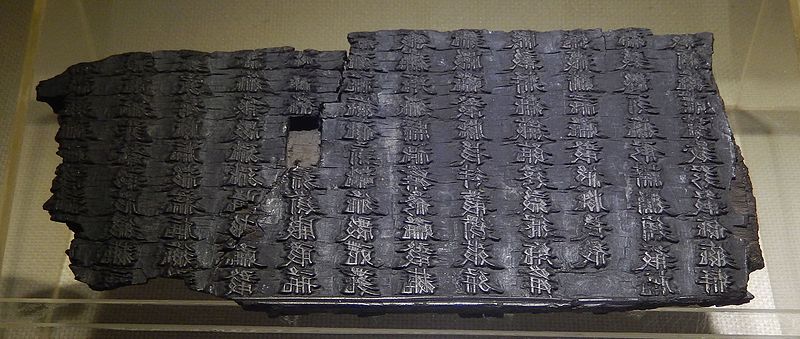Diary of a Rambling Antiquarian
Tuesday, 30 August 2016
Hongfo Pagoda
After visiting the Western Xia Tombs this morning, and the Baisikou Twin Pagodas this afternoon, I want to visit one more Western Xia site before I return to Yinchuan and get ready to head for the airport later this evening. It is the Hongfo Pagoda (宏佛塔 = Grand Buddha Pagoda) which is situated in Helan county, just north of Yinchuan. I am not sure how long it will take to get there from Basikou, on the edge of the Helan Mountains, but it is still only mid-afternoon, and I think there should be enough time. I ask the driver of the taxi I have hired for the day, and apparently anything is possible for an extra hundred yuan or so. He has no idea of where it is, but he speaks the name of the pagoda into his phone, and directions magically appear on his screen. It's over 40 km away as the crow flies, and it takes us over an hour by road.
The pagoda is in the countryside, surrounded by fields, about 800 m north of the main road heading east out of the county town. The area around the pagoda has been paved over, as is typical of cultural sites in China, but with trees on all sides it is a very pleasant place. There is no ticket office or caretaker, and we are the only two people here. It does not seem that it is popular tourist destination, but for me it is an ideal way to finish off my two weeks in Ningxia and Inner Mongolia.
Hongfo Pagoda
This is a brick pagoda, originally with a solid clay core around a central wooden post. It is divided into two architecturally distinct sections: the lower half is octagonal in shape, and comprises three storeys, but the upper half is shaped like a Tibetan-style stupa with a stepped ratha-shaped base. It is very unlike either the two Western Xia pagodas at Baiskou or the Western Xia square pagoda at Basigou. The twin pagodas at Baisikou are quite similar in shape and form to Liao dynasty octagonal brick pagodas (albeit with some Tangut features, such as the titans holding the base of the pinnacle on the west pagoda), whereas the Hongfo Pagoda does not seem to be modelled after typical Song or Liao pagodas. However, it is quite similar in form to the North Pagoda at Yunju Temple north of Beijing, which was built in 1118 at the end of the Liao dynasty (old photograph).
The pagoda dates to the Western Xia, and was undoubtedly part of a Buddhist temple or monastery, but there are no certain historical records that mention the pagoda or the temple it belonged to. The exact date of construction is unknown, although the central wooden post of the pagoda has been radiocarbon dated to the Western Xia period (I have not seen what radiocarbon date range was arrived at). The pagoda has been repaired and renovated several times over the centuries, but by the 1980s the pagoda was in a very poor state, with the brickwork around the base missing and the pinnacle lost. There were large cracks in the structure, and it was feared that it could collapse at any time. There is a large model (quarter size?) of the pagoda before restoration at the Xixia Museum, but I did not take a photograph of it (I thought I did, but my camera says otherwise). Even better however, here is a photograph by Lei Runze of the pagoda in the mid-1980s, before restoration:
Hongfo Pagoda in the 1980s
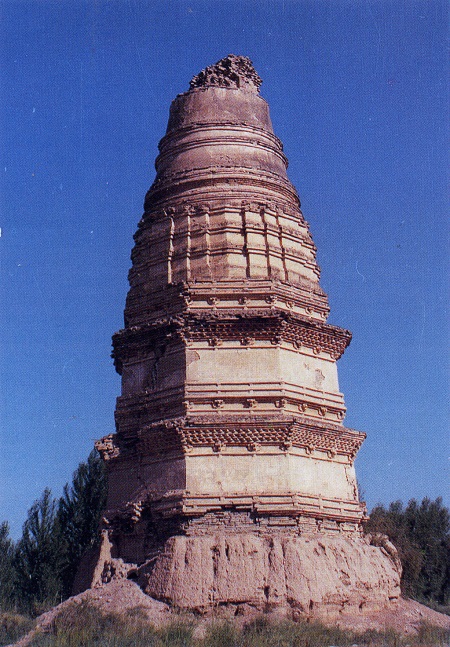
Orientations April 1996 p. 56
Photograph by Lei Runze 雷潤澤
In 1987 a panel of experts was formed in order to come up with a plan for the restoration of the pagoda. After surveying the pagoda it was decided that the only course of action was to entirely dismantle the pagoda and rebuild it, which happened between 1989 and 1990. The rebuilt pagoda is very beautiful, and should last for many centuries, but in many respects it is a reconstruction of the original pagoda rather than a restoration of the pagoda that stood on this site up until 1990. The pagoda was 28.2 metres in height before restoration, and after the restoration of the upper section and pinnacle it is now 35 metres in height. Unlike the original solid pagoda, the new pagoda is hollow with a small entrance on the south face.
Hongfo Pagoda after renovation
Detail of Hongfo Pagoda
Inside of Hongfo Pagoda
The pagoda was originally solid with a wooden post for a spine, but the renovation created a hollow space in the centre.
Finds from the Pagoda
During renovation of the pagoda a small room at the base of the pinnacle was discovered. Inside this room had been deposited a large number of Buddhist relics, including some forty painted earthenware statues, a couple of wooden statues, the remains of fourteen silk paintings, and several clay or wooden models of stupas and Buddhas. I was able to take photographs of some of the discovered relics from the pagoda when I visited Ningxia Museum a couple of weeks ago.
Earthenware statues of Arhats
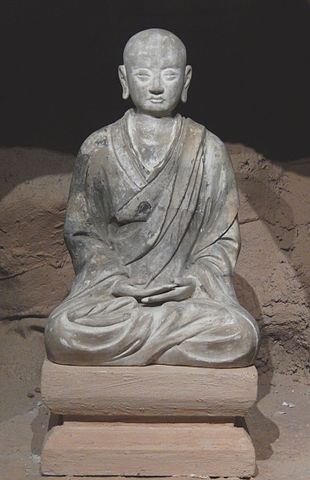 |
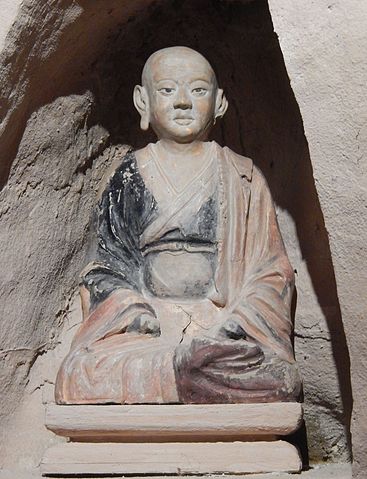 |
 |
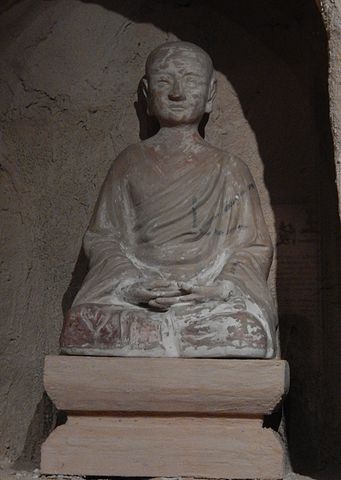 |
Earthenware sculptures of Buddha and Arhat heads
 |
 |
Four clay Buddha heads
Painted stupa models
In addition to the many Buddhist sculptures and paintings, a wooden tablet with Tangut writing recording the restoration of the pagoda, a small fragment of a Tangut Buddhist manuscript, a piece of a page from the printed text of the Tangut-Chinese glossary Pearl in the Palm, and more than two thousand pieces of wooden printing blocks for Tangut Buddhist sutras were found in the room.
Wooden tablet with Tangut text written in ink
Wooden printing block for a Tangut Buddhist text
Qing dynasty steles
There are two Qing dynasty steles erected at the south end of pagoda compound, one dated Qianlong 45 (1780) for an official called Hu from Hongtong county in Shanxi, and one dated jiachen (1784?) for a military commander called Shi who was posted to Hongguang Garrison (洪廣營), about 20 km north-west of the pagoda.
Qing dynasty steles
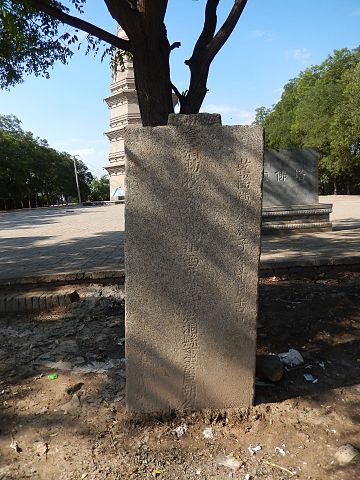 |
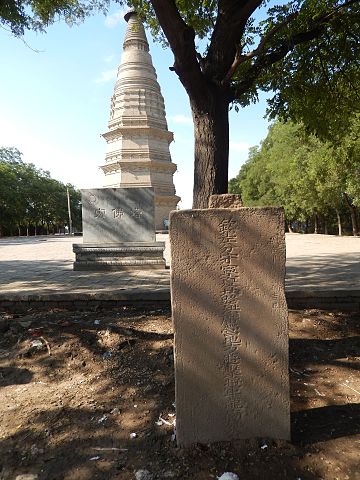 |
Adieu
It is time now to leave my last Ningxia pagoda for this trip, and return to Yinchuan; then to the airport for the flight home to England. It has been a very successful two weeks, and I hope I can come here again some day.
In front of Hongfo Pagoda

Ningxia | Pagodas | Western Xia
Index of Rambling Antiquarian Blog Posts
Rambling Antiquarian on Google Maps
